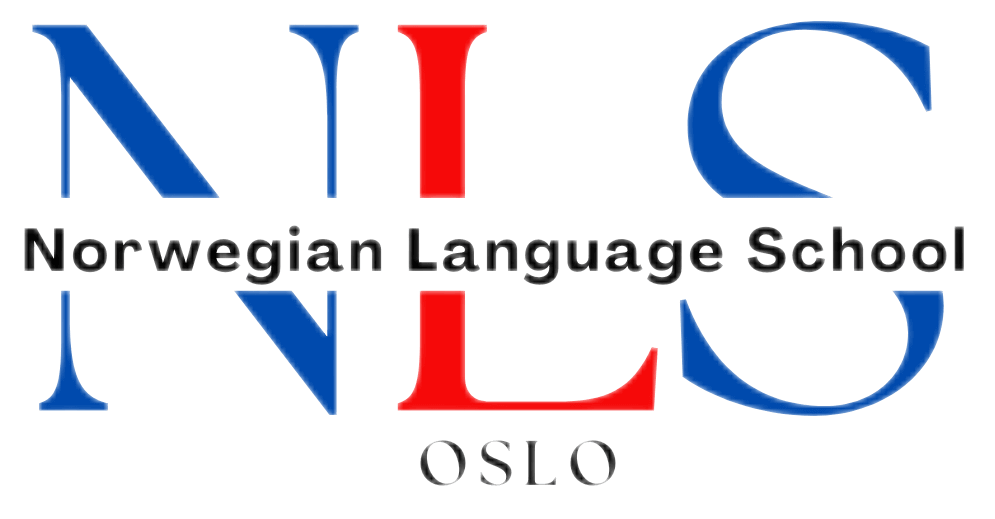

From A to Z: Building Basic Spanish Vocabulary for Young Minds
Learning Spanish vocabulary is an essential part of becoming fluent in the language. Vocabulary is the foundation of communication, allowing us to express ourselves and understand others. In this blog post, we will explore the importance of learning Spanish vocabulary and provide a comprehensive guide to help you expand your knowledge. The post is structured alphabetically, with each section focusing on a different topic or theme. We will provide lists of vocabulary words, along with examples of how to use them in sentences. By the end of this blog post, you will have a solid foundation of Spanish vocabulary that you can continue to build upon.
Table of Contents
ToggleThe Importance of Learning Spanish at a Young Age
Learning a second language at a young age has numerous benefits. Research has shown that children who are exposed to multiple languages have better cognitive skills, including problem-solving and critical thinking. They also tend to have better memory and attention span. Learning Spanish at a young age can also enhance cultural awareness and empathy, as children are exposed to different ways of thinking and living.
In addition to these cognitive benefits, learning Spanish can also provide practical advantages in the long run. Spanish is the second most widely spoken language in the world, with over 460 million native speakers. It is also the official language in 21 countries. By learning Spanish, children open up opportunities for travel, work, and personal connections in these countries. In an increasingly globalized world, being bilingual is a valuable skill that can set children apart in their future careers.
A is for Animals: Vocabulary for Common Spanish Animals
Learning animal vocabulary is a fun way to start building your Spanish vocabulary. Here are some common animals in Spanish:
– Perro (dog)
– Gato (cat)
– Caballo (horse)
– Vaca (cow)
– Pájaro (bird)
– Pez (fish)
– Elefante (elephant)
– León (lion)
– Mono (monkey)
– Oso (bear)
To use these words in sentences, you can say:
– Tengo un perro. (I have a dog.)
– El gato está durmiendo. (The cat is sleeping.)
– El caballo corre rápido. (The horse runs fast.)
– La vaca da leche. (The cow gives milk.)
– El pájaro canta hermosamente. (The bird sings beautifully.)
– El pez nada en el agua. (The fish swims in the water.)
– El elefante es grande. (The elephant is big.)
– El león ruge en la selva. (The lion roars in the jungle.)
– El mono se balancea en los árboles. (The monkey swings on the trees.)
– El oso vive en la cueva. (The bear lives in the cave.)
B is for Body Parts: Basic Spanish Vocabulary for the Human Body
Knowing the basic body parts in Spanish is essential for describing physical sensations and understanding medical terms. Here are some basic body parts in Spanish:
– Cabeza (head)
– Ojos (eyes)
– Nariz (nose)
– Boca (mouth)
– Orejas (ears)
– Cuello (neck)
– Hombros (shoulders)
– Brazos (arms)
– Manos (hands)
– Pies (feet)
To use these words in sentences, you can say:
– Me duele la cabeza. (My head hurts.)
– Tengo los ojos cansados. (I have tired eyes.)
– Mi nariz está congestionada. (My nose is congested.)
– Abre la boca y di “ah”. (Open your mouth and say “ah”.)
– Escucho con mis orejas. (I hear with my ears.)
– Me duele el cuello. (My neck hurts.)
– Levanta los hombros. (Raise your shoulders.)
– Estiro los brazos. (I stretch my arms.)
– Lavo mis manos antes de comer. (I wash my hands before eating.)
– Camino descalzo para sentir la arena en mis pies. (I walk barefoot to feel the sand on my feet.)
C is for Colors: Learning the Colors in Spanish
Colors are an essential part of everyday communication, and learning them in Spanish will allow you to describe objects and express preferences. Here are some basic colors in Spanish:
– Rojo (red)
– Azul (blue)
– Amarillo (yellow)
– Verde (green)
– Naranja (orange)
– Morado (purple)
– Rosa (pink)
– Blanco (white)
– Negro (black)
– Gris (gray)
To use these words in sentences, you can say:
– Me gusta el vestido rojo. (I like the red dress.)
– El cielo está azul hoy. (The sky is blue today.)
– Tengo una camiseta amarilla. (I have a yellow t-shirt.)
– El césped es verde. (The grass is green.)
– Comí una naranja jugosa. (I ate a juicy orange.)
– El globo es de color morado. (The balloon is purple.)
– Ella lleva un vestido rosa. (She is wearing a pink dress.)
– La nieve es blanca. (The snow is white.)
– El carbón es negro. (The coal is black.)
– El cielo está gris y nublado. (The sky is gray and cloudy.)
D is for Days of the Week: Vocabulary for the Days of the Week in Spanish

Knowing the days of the week in Spanish is essential for scheduling and planning. Here are the days of the week in Spanish:
– Lunes (Monday)
– Martes (Tuesday)
– Miércoles (Wednesday)
– Jueves (Thursday)
– Viernes (Friday)
– Sábado (Saturday)
– Domingo (Sunday)
To use these words in sentences, you can say:
– Mañana es lunes. (Tomorrow is Monday.)
– Tengo una cita el martes. (I have an appointment on Tuesday.)
– El miércoles es mi día favorito de la semana. (Wednesday is my favorite day of the week.)
– Quedamos el jueves para tomar café. (Let’s meet on Thursday for coffee.)
– Los viernes salgo temprano del trabajo. (I leave work early on Fridays.)
– Me gusta relajarme los sábados. (I like to relax on Saturdays.)
– El domingo es un buen día para pasar tiempo en familia. (Sunday is a good day to spend time with family.)
E is for Emotions: Basic Spanish Vocabulary for Emotions and Feelings
Being able to express emotions and feelings is crucial for effective communication. Here are some basic emotions and feelings in Spanish:
– Feliz (happy)
– Triste (sad)
– Enfadado/a (angry)
– Asustado/a (scared)
– Sorprendido/a (surprised)
– Cansado/a (tired)
– Aburrido/a (bored)
– Nervioso/a (nervous)
– Emocionado/a (excited)
– Preocupado/a (worried)
To use these words in sentences, you can say:
– Estoy feliz porque aprobé el examen. (I am happy because I passed the exam.)
– Me siento triste por la pérdida de mi abuelo. (I feel sad about the loss of my grandfather.)
– Estoy enfadado/a contigo. (I am angry with you.)
– Me asusté cuando vi una araña. (I got scared when I saw a spider.)
– Me sorprendió el regalo que recibí. (I was surprised by the gift I received.)
– Estoy cansado/a después de un largo día de trabajo. (I am tired after a long day of work.)
– Me aburro cuando no tengo nada que hacer. (I get bored when I have nothing to do.)
– Estoy nervioso/a por la entrevista de trabajo. (I am nervous about the job interview.)
– Estoy emocionado/a por mi próximo viaje. (I am excited about my upcoming trip.)
– Estoy preocupado/a por la situación actual. (I am worried about the current situation.)
F is for Food: Vocabulary for Common Spanish Foods
Food is an integral part of any culture, and learning food vocabulary in Spanish will allow you to navigate menus and enjoy authentic culinary experiences. Here are some common foods in Spanish:
– Arroz (rice)
– Pan (bread)
– Leche (milk)
– Queso (cheese)
– Carne (meat)
– Pollo (chicken)
– Pescado (fish)
– Frutas (fruits)
– Verduras (vegetables)
– Postre (dessert)
To use these words in sentences, you can say:
– Me gusta el arroz con pollo. (I like chicken and rice.)
– Quiero un sándwich de jamón y queso. (I want a ham and cheese sandwich.)
– Tomo leche todas las mañanas. (I drink milk every morning.)
– El queso está delicioso. (The cheese is delicious.)
– Me encanta la carne asada. (I love grilled meat.)
– Prefiero el pollo al pescado. (I prefer chicken over fish.)
– Las frutas son una buena opción para el postre. (Fruits are a good option for dessert.)
– Las verduras son importantes para una dieta saludable. (Vegetables are important for a healthy diet.)
– Me gusta el pastel de chocolate como postre. (I like chocolate cake as dessert.)
G is for Geography: Learning Basic Spanish Vocabulary for Countries and Continents
Knowing the names of countries and continents in Spanish is essential for understanding geography and discussing travel plans. Here are some basic countries and continents in Spanish:
– España (Spain)
– México (Mexico)
– Estados Unidos (United States)
– Canadá (Canada)
– Francia (France)
– Italia (Italy)
– Alemania (Germany)
– China (China)
– Brasil (Brazil)
– África (Africa)
– América del Norte (North America)
– América del Sur (South America)
– Europa (Europe)
– Asia (Asia)
– Oceanía (Oceania)
To use these words in sentences, you can say:
– Quiero visitar España algún día. (I want to visit Spain someday.)
– México es conocido por su comida deliciosa. (Mexico is known for its delicious food.)
– Los Estados Unidos es un país grande y diverso. (The United States is a large and diverse country.)
– Canadá tiene paisajes hermosos. (Canada has beautiful landscapes.)
– Francia es famosa por su cultura y su cocina. (France is famous for its culture and cuisine.)
– Italia es conocida por su arte y su historia. (Italy is known for its art and history.)
– Alemania es un país industrializado y tecnológicamente avanzado. (Germany is an industrialized and technologically advanced country.)
– China tiene una rica historia y una cultura fascinante. (China has a rich history and a fascinating culture.)
– Brasil es famoso por su carnaval y sus playas hermosas. (Brazil is famous for its carnival and beautiful beaches.)
– África es un continente diverso y lleno de vida. (Africa is a diverse continent full of life.)
– América del Norte tiene una gran variedad de paisajes y culturas. (North America has a great variety of landscapes and cultures.)
– América del Sur es conocida por su música, danza y naturaleza exuberante. (South America is known for its music, dance, and lush nature.)
– Europa tiene una gran cantidad de países con una rica historia y cultura. (Europe has a large number of countries with a rich history and culture.)
– Asia es el continente más grande y poblado del mundo. (Asia is the largest and most populous continent in the world.)
– Oceanía está formada por varias islas y países en el océano Pacífico. (Oceania is made up of several islands and countries in the Pacific Ocean.)
H is for Holidays: Vocabulary for Common Spanish Holidays and Celebrations
Learning vocabulary related to holidays and celebrations in Spanish will allow you to participate in cultural traditions and understand local customs. Here are some common holidays and celebrations in Spanish:
– Navidad (Christmas)
– Año Nuevo (New Year)
– Semana Santa (Holy Week/Easter)
– Día de los Muertos (Day of the Dead)
– Día de la Independencia (Independence Day)
– Día de San Valentín (Valentine’s Day)
– Día de la Madre (Mother’s Day)
– Día del Padre (Father’s Day)
– Cumpleaños (Birthday)
– Aniversario (Anniversary)
To use these words in sentences, you can say:
– Celebramos la Navidad en familia. (We celebrate Christmas with family.)
– Feliz Año Nuevo. (Happy New Year.)
– Durante la Semana Santa, muchas personas van a la iglesia. (During Holy Week, many people go to church.)
– En el Día de los Muertos, se honra a los seres queridos que han fallecido. (On the Day of the Dead, loved ones who have passed away are honored.)
– El Día de la Independencia es una fiesta nacional en muchos países. (Independence Day is a national holiday in many countries.)
– En el Día de San Valentín, se celebra el amor y la amistad. (On Valentine’s Day, love and friendship are celebrated.)
– En el Día de la Madre, se honra a las madres y se les agradece por su amor y cuidado. (On Mother’s Day, mothers are honored and thanked for their love and care.)
– En el Día del Padre, se honra a los padres y se les agradece por su amor y apoyo. (On Father’s Day, fathers are honored and thanked for their love and support.)
– Hoy es mi cumpleaños. (Today is my birthday.)
– Hoy celebramos nuestro aniversario de bodas. (Today we celebrate our wedding anniversary.)
If you want to learn Spanish, you can register for classes here. We look forward to hearing from you and helping you become fluent in Spanish!
If you want to learn Norwegian, you can register for classes here. We look forward to hearing from you and helping you become fluent in Norwegian.





